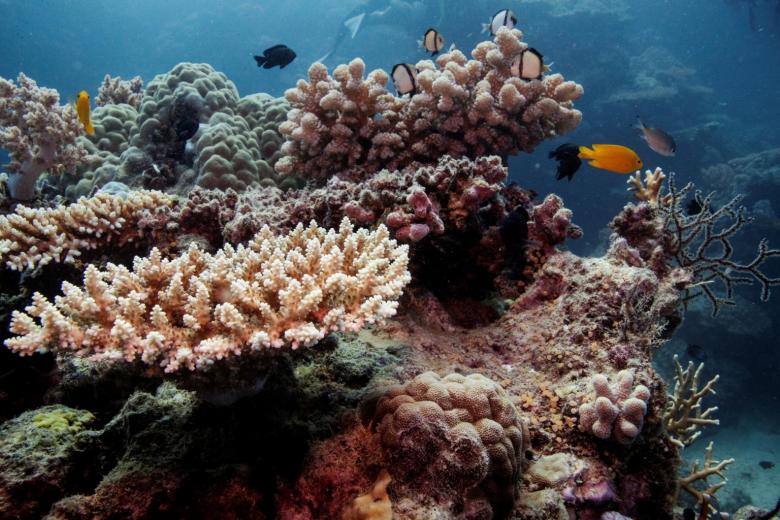SINGAPORE – The Australian government has pledged an additional A$1 billion (S$955 million) to protect the health of the Great Barrier Reef, but some scientists say this will do nothing to reduce the main risk to its future: climate change.
Emissions from burning fossil fuels are heating up the oceans, causing marine heatwaves that have triggered widespread damage to the world’s largest coral reef ecosystem in recent years. Yet the government has been criticised internationally for its weak climate targets and for backing fossil fuel exports.
The funding plan, which comes just months before a national election, was set to be formally unveiled by Prime Minister Scott Morrison on Friday (Jan 28) in Cairns in north Queensland, a state that is a major coal and liquefied natural gas (LNG) exporter.
His ruling Liberal-National coalition faces an election fight in a number of seats that border the 2,300km reef, including the federal seat of Leichhardt that incorporates Cairns, a major gateway to the reef.
“We are backing the health of the reef and the economic future of tourism operators, hospitality providers and Queensland communities that are at the heart of the reef economy,” Mr Morrison said in a statement on Friday on his official website. “This is already the best managed reef in the world and today we take our commitment to a new level.”
But the opposition Labor Party criticised the plan as an election ploy, saying if the government was truly committed to saving the reef, they would do more to tackle climate change.
The A$1 billion funding over nine years includes nearly A$600 million to improve water quality, covering work on erosion, land condition and reducing runoff of pesticides and nutrients from cattle farms, sugar cane and banana crops.
Another A$253 million is for reef management and conservation, including work to control coral-eating crown-of-thorns starfish and prevent illegal fishing. A further A$92.7 million is to assist programmes to boost reef restoration and adaptation to climate change.
The pledge is in addition to more than A$2 billion already outlined in the federal government’s Reef 2050 Plan.
Scientists, however, said there should be a stronger focus on addressing the climate change risks to the reef.
Fears are growing for the future of the reef because of rising global temperatures and heat being stored in the oceans. Corals bleach, or turn a ghostly white, when exposed to long periods of above-average water temperatures. If the temperature does not return to normal levels within a few weeks, the corals can die.
Three mass bleaching episodes in 2020, 2017 and 2016 led to widespread loss of shallow water corals on the Great Barrier reef, greatly hurting the reef’s natural ability to recover.
“This injection of federal government funding is crucial in ensuring that we still have iconic Great Barrier Reef ecosystems for future generations to enjoy and sustainably build their livelihoods upon,” said Dr Karen Joyce, a senior lecturer at James Cook University in Queensland.
But “with increasing sea surface temperatures arguably one of the greatest stressors for the reef, we must not lose sight of this challenge,” she said.


